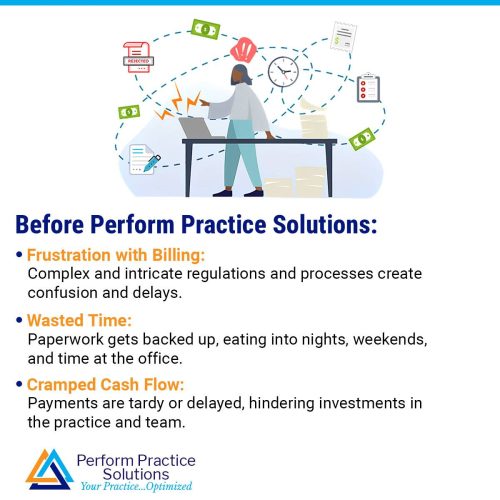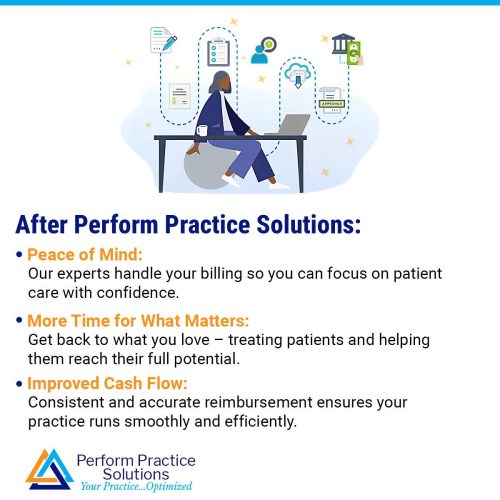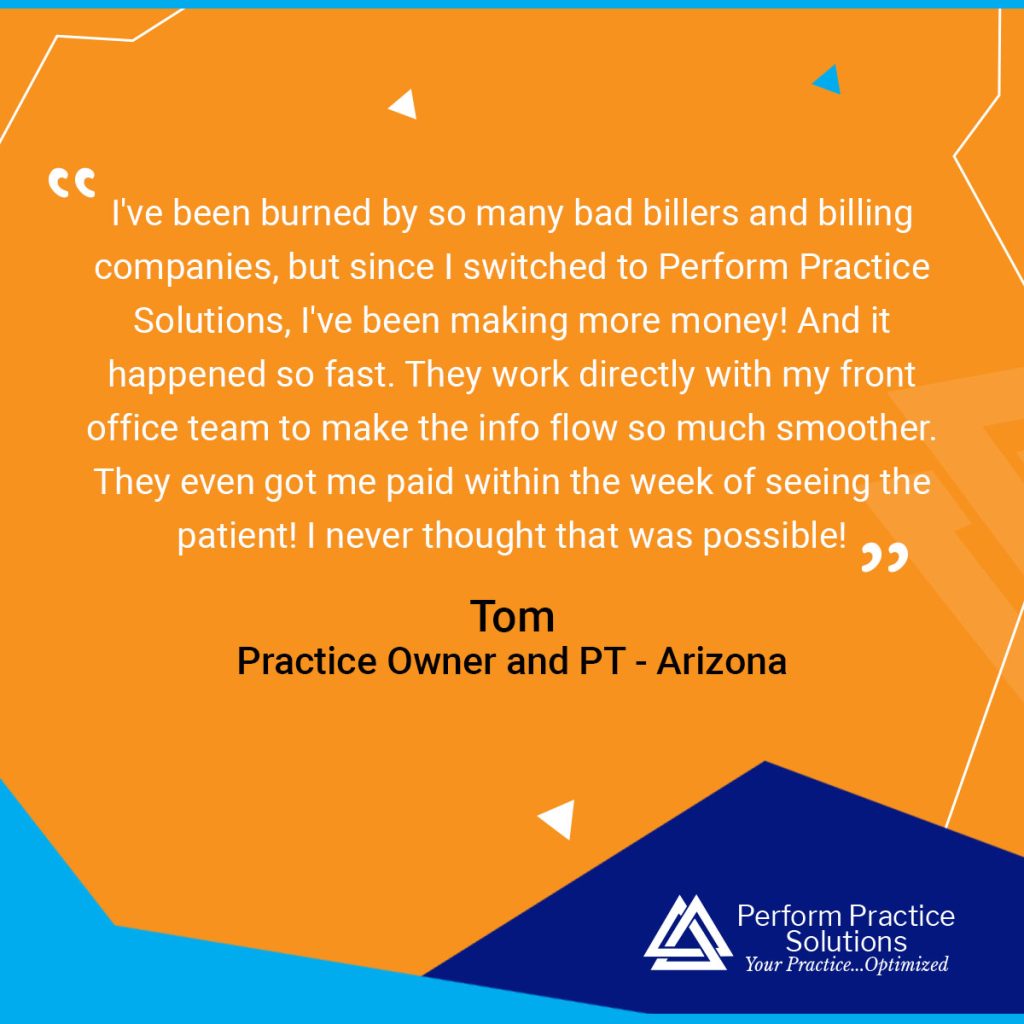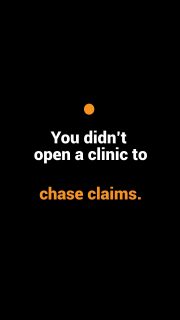Effective medical office management is crucial for providing quality patient care and maintaining a thriving practice. By knowing the specific roles and responsibilities of each employee, office managers can effectively manage, motivate, and train their staff. Discover proven strategies for efficient and effective office management.
Perform Practice Solutions is the secret weapon for successful healthcare practices all over the U.S. We simplify the most challenging – and resource-draining – aspects of managing a medical practice, helping you run your business more efficiently and with less stress. We have a full front-desk solution — and also offer turn-key services from medical business operations to medical credentialing services, including medical business marketing, patient eligibility verification, sales consulting, and medical billing solutions, we are your team!
Overseeing and running a medical office is not an easy task. Luckily, a competent medical office manager can responsibly manage all operations and ensure everything runs as smoothly as possible. Along with having a skilled medical office manager and tools such as medical office scheduling software, you can follow several golden rules to eliminate a long list of problems that will eventually arise.
Managers are not only responsible for the overall operations of a business, but also are responsible for the success of their employees. They need to motivate and supervise their teams, distribute the workload, and coordinate with staff to guarantee smooth operations of their medical office. Naturally, when things go well, a medical office manager will get praised, but if things don’t go so well, they also get the blame.
Whether they are managing a small group of employees or an entire staff at a hospital, a manager can accomplish the goals of the business by following these essential golden rules.
By understanding each employee’s job function, an office manager can better manage, motivate and train each staff member. Office managers can also improve scheduling processes when they have an in-depth understanding of each job and its function.
Rule #1: Know Job Functions
Every job within a medical office, no matter how big or small can contribute to the success of an organization. To effectively manage a medical office, the medical office manager must have an in-depth understanding of each job and its function. Understanding each job function is vital to train, motivate, and manage employees properly.
For a medical office to survive in the healthcare industry, a manager must be fully aware of what is required for each job function. A business can lose its ability to continue to offer Health Care Services if compliance requirements are not maintained. Having a broad knowledge of each job and its function can lead to a great team that can easily meet a company’s bottom line.
Rule #2: Distribute the Workload
Now that you have a good idea of each job and its function, it is time to ensure each role is adequately filled every day by using medical office scheduling software. Healthcare employee scheduling software can give you a bird’ s-eye view of each job that is being filled and allows you to ensure that you are not over or understaffed.
Medical office scheduling software can also allow you to manage time off for your employees. Rather than using pen and paper to track this information, you can have all time-off requests visible in one area so you can determine if any jobs need to be filled by part-time or temporary employees.
Not only does using medical office employee work schedule software make managing a medical office much easier, but it can also improve the overall happiness of your employees. Employees can have access to their schedules from any device and can plan their personal lives accordingly. Medical office scheduling software also provides greater transparency – if an employee needs to ask a question about their schedule or wants to swap shifts, this can be done quickly with a few clicks.


Communication is key in every business and a medical office is no exception. Effective communication can improve employee-employer relations, increase productivity and can be a catalyst for change when it comes to workplace policies and processes.
Rule #3: Communicate Effectively
Effective communication is more than just talking and listening to one another. It means fostering mutual respect between staff and management. It is the responsibility of the medical office manager to set the tone for effective communication and use it wisely for the benefit of the office.
To communicate effectively, you must do the following:
- Listen: Employees are an excellent resource to determine how smoothly or not so smoothly, office operations are running. They have first-hand knowledge of office policies and processes and can offer insight into making the office operate more efficiently.
- Establish Expectations: So that employees aren’t running around like chickens with their heads cut off, managers must set clear expectations for each of their employees. Not only does this include defining their job function but also outlining other important work aspects such as time and attendance, code of conduct, and so on.
- Provide Feedback: Employees should be given feedback regularly. Whether you are providing constructive criticism or letting them know they are doing a great job, this regular communication can improve the employee-employer relationship and the overall operations of a medical office.
No one likes to be micromanaged – it can cause employees to feel disrespected and mistrusted. Medical office managers should allow employees to do their job with little interference from management. Doing so encourages mutual respect and can increase productivity.
Rule #4: Trust your Employees
Constantly micromanaging employees can cause an office manager to end up with the reverse effect of what they intended. Each employee has a different personality and a different job function, which can result in them having a diverse work style. Employees are much more productive and effective at their job when they feel trusted to make decisions and are granted the opportunity to be responsible or their own work.
By providing feedback regularly, you can make it known to employees that their work is being observed, and they will be held accountable for the quality of their work. Your employees will be much more motivated to achieve excellence when they don’t have to worry about their manager standing over their shoulder. Putting your trust in your employees that they will do their work to the best of their ability allows the medical office manager to focus on other essential aspects of running the office.
Running a medical office is challenging and can become overwhelming quickly. By using the above mentioned golden rules, you can improve daily operations, foster an atmosphere of mutual respect, and reduce labor costs by using medical office scheduling software.
Elevate your medical practice in 2025. Our expert consultants can help you implement strategies to improve efficiency, patient satisfaction, and revenue. Let us handle the billing. Schedule your free consultation here with Kevin Rausch to get all your questions answered. Follow us on Instagram here.
Reference: [https://buddypunch.com/blog/golden-rules-of-managing-a-medical-office-scheduling/]





































